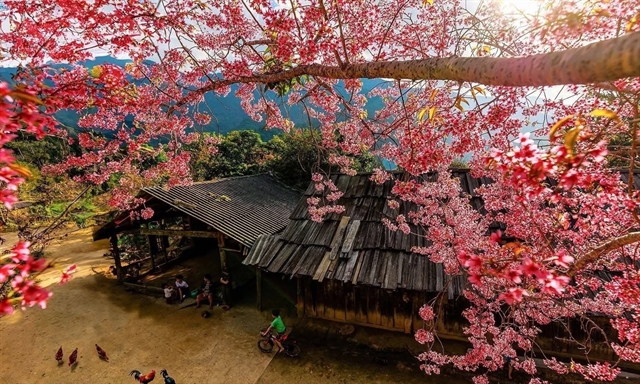 Travel
Travel

In the language of Tày ethnic people, Thẳm Phầy means the cave of fire. No one can explain why people called it that way. Actually, the cave hides a stream, several waterfalls and a miraculous world of stalactites.
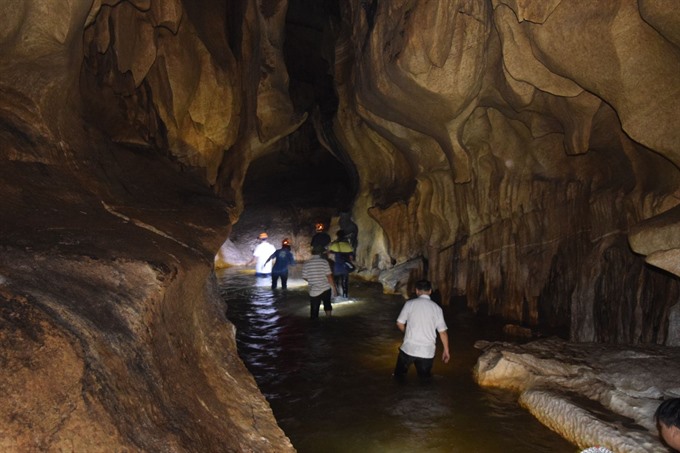 |
| Wading time: It’s slow going inside the Thẳm Phầy Cave because the water level is waist-deep. |
By Minh Đức
The Tay people call it Thẳm Phầy, or the “Cave of Fire”.
Apparently, no one knows why.
The name becomes even more mysterious when we learn that the cave is home to a stream and several waterfalls apart from a miraculous world of stalactites.
The newly-found cave is located in Hoàng Trĩ Commune, Ba Bể District, Bắc Kạn Province, about 200km from Hà Nội.
It is so impressive that it has been dubbed the Sơn Đoòng of the North. (Sơn Đoòng, in Quảng Bình Province, is said to be the world’s largest and most beautiful cave).
Our team was excited as we began our trip this cave, leaving Bắc Kạn City at 5am. After two hours, we reached Hoàng Trĩ Commune. Locals took us to the forest’s edge on motorbikes.
From there, we had to walk for about 2km on a path that ran through terraced fields, streams, bamboo bridges and thick bushes. The cave’s mouth on the mountainside would have been hard to find without locals guiding us.
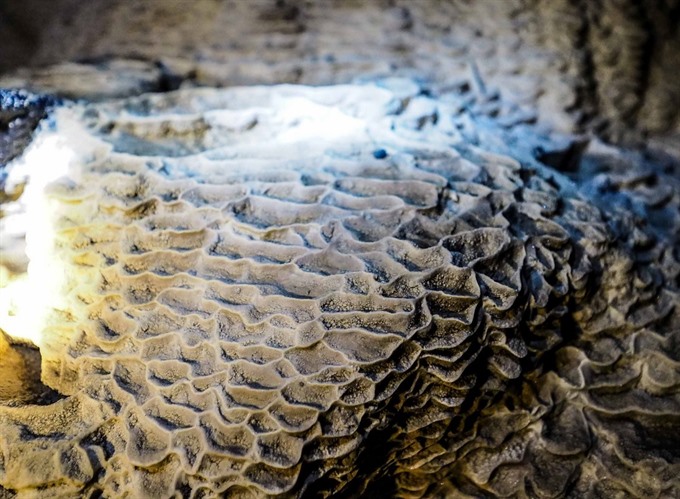 |
| Magic sculptures: Carved over millennia, spectacular designs adorn the cave. — Photo baodulich.net.vn |
From the entrance, we walked down short path to enter the cave proper. The path was slippery with water constantly dripping from the ceiling. Big, impassive rocks and stalactites stood sentry.
A shallow spring with clear and pure water ran gently, and we began to understand comparisons with the Sơn Đoòng Cave.
Hoàng Văn Quân, chief of Hoàng Trĩ Commune, had told us that 1,400 households in the commune were using water that runs down from this mountain, so they have always been aware of the need to protect the local environment and water sources.
As we walked further inside the cave, we disturbed many bats who’d been hanging from the ceiling. They scattered, noisily flapping their wings.
We were struck by the magnificence of the stalactites of different shapes that had formed over millions of years.
About a kilometre from the entrance, the spring splits into two, one running along the mountainside and the other flowing into the heart of the mountain, getting deeper.
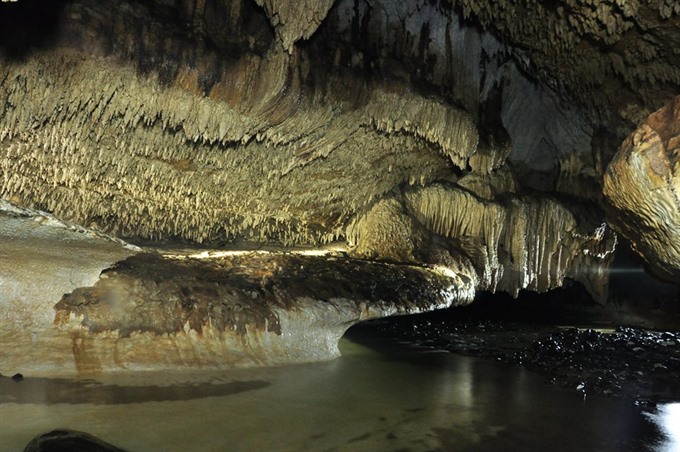 |
| Water resource: A reservoir inside Thằm Phầy Cave. |
Nguyễn Tường Linh, director of Mr Linh’s Adventures, who has explored the cave many times, asked us to take the path on the left because it had rained hard early in the morning making the water levels rise.
“There may be unexpectedly strong water currents if we go into the heart of the mountain,” he said, adding to our sense of adventure.
We followed each other carefully, one by one, as we waded through the stream, making splashing noises. The water was knee-deep in some sections, revealing spotless white gravel on its bed.
The deeper we got into the cave, the cooler the air became and deeper the spring. More stalactites blessed us with continuously dripping water, each one looking like the creation of a master sculptor, a description that fits forces of nature perfectly.
We continued walking in the stream for another kilometre before deciding to return because of Linh’s warnings about flash floods. None of us were experienced cave explorers.
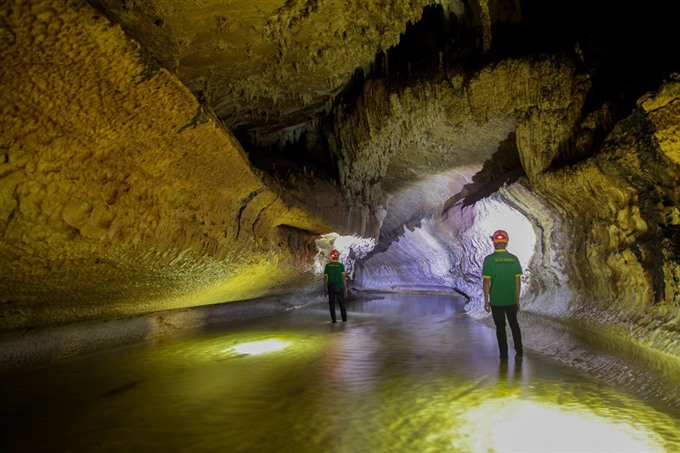 |
| Cavernous: The highest ceiling in the cave is around 20m above the ground. |
Hoàng Văn Uyên, a 60-year-old farmer, proudly told us that he was among the few who had successfully hiked the cave system’s total length of five to six kilometres. He started the trip at dusk and found the way out on the other side of the mountain at sunrise.
We learnt that local authorities are inspecting a number of caves in the area, including Thẳm Phầy, to exploit them for tourism purposes.
“We will invite researchers and cave explorers to survey Thằm Phầy,” said Hà Văn Trường, director of the provincial Department of Culture, Sports and Tourism.
“Now, the leadership of Hoàng Trĩ Commune is responsible for managing the site. Several travel companies have been granted permission to bring tourists to visit Thẳm Phầy.”
“Access to the area is restricted during the rainy season because we’re afraid the cave will be flooded.”
He said that during the National Day holiday in September, many trekkers came to the cave with tents, life-jackets, flashlights and food, as also waterproof cameras.
The cave leaves its mark on everyone who visits it.
Linh recalled: “I still remember the feeling when I visited the cave for the first time. It was breathtaking, and the happiness of entering this wonderful world lingered in my mind for several weeks.” — VNS




